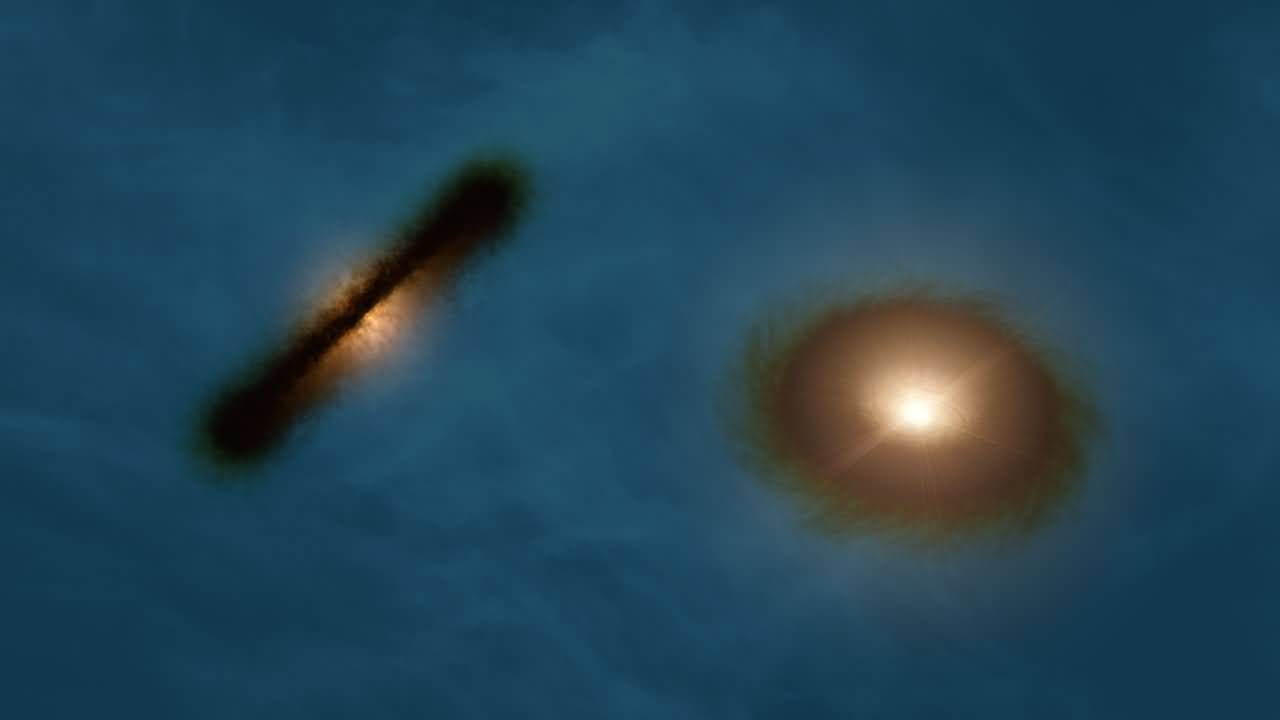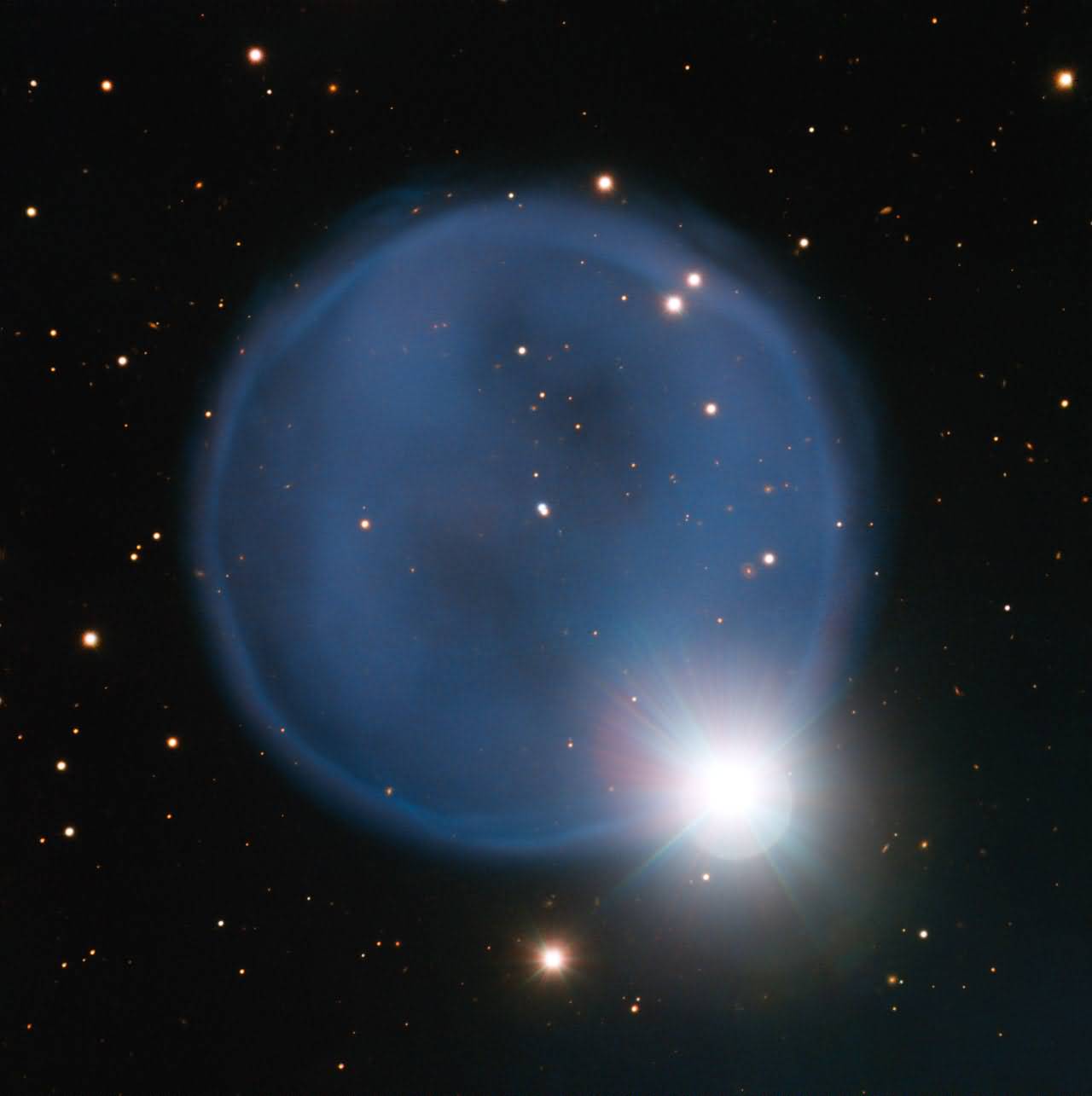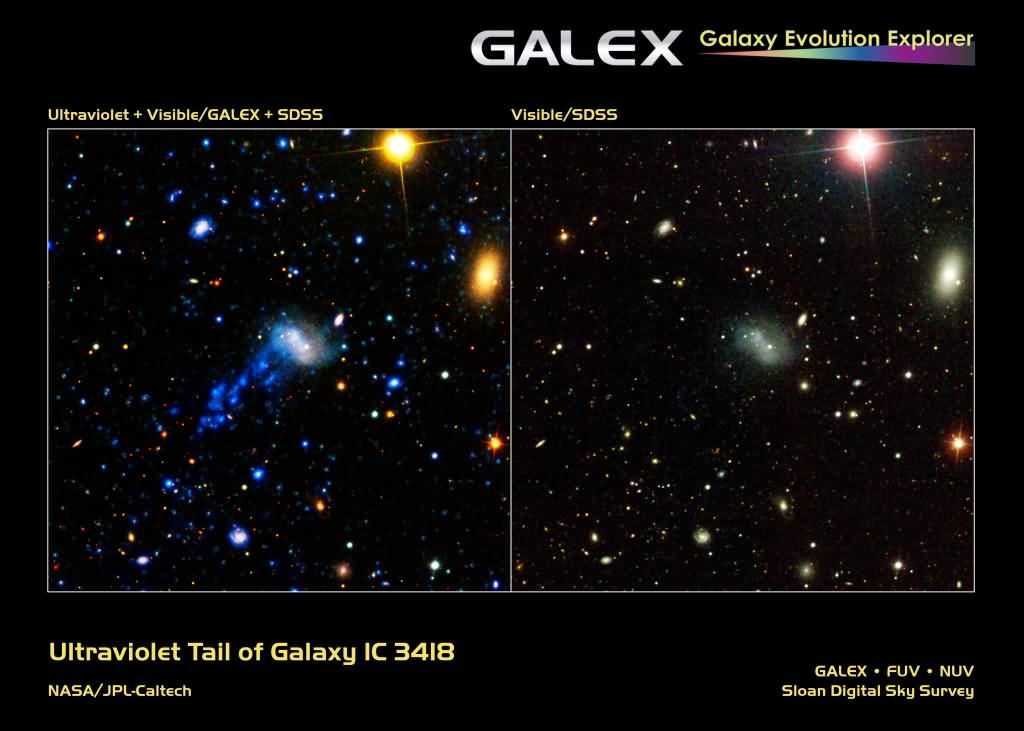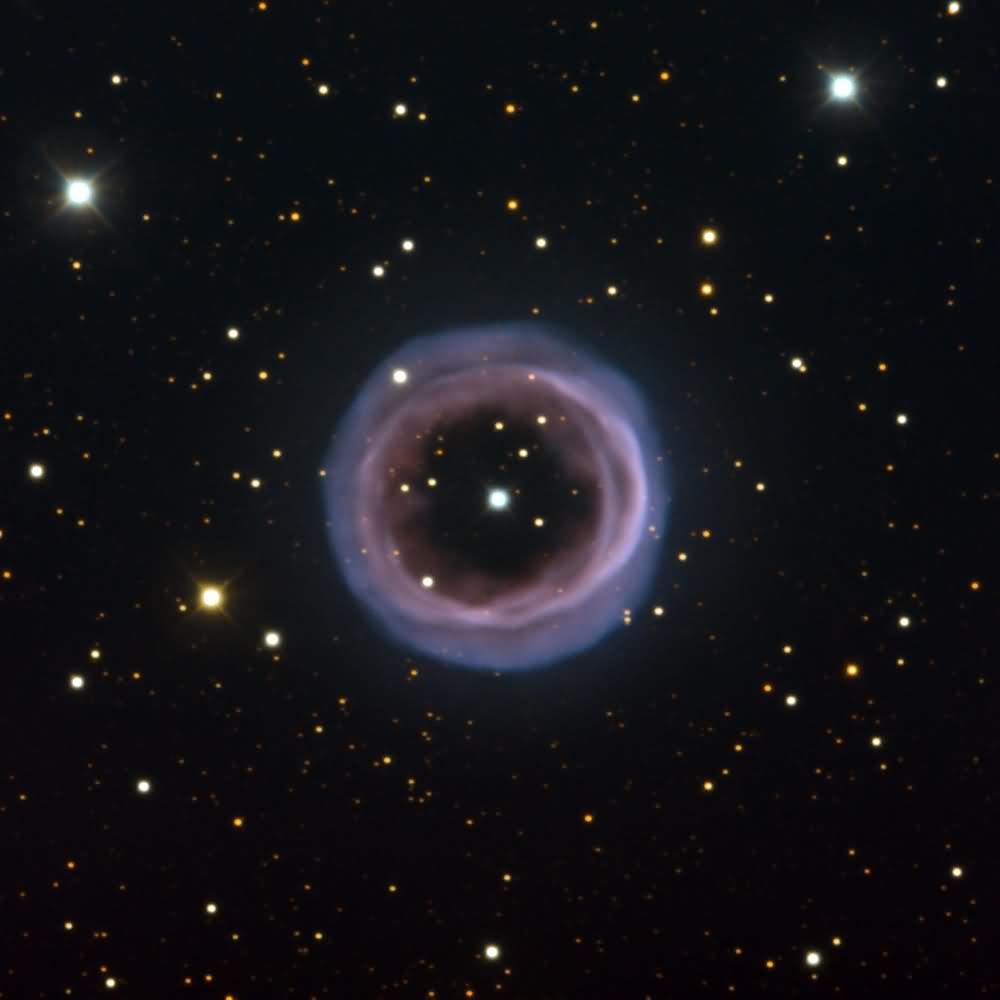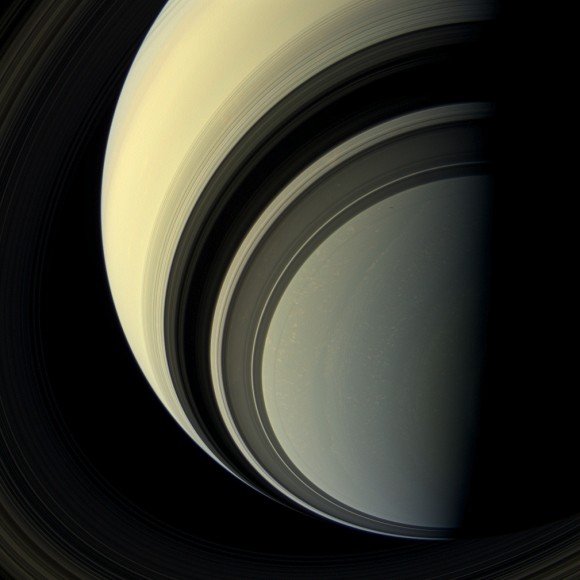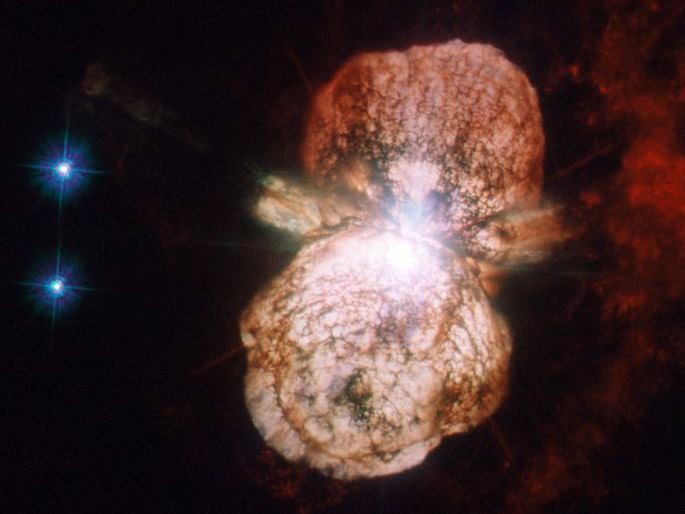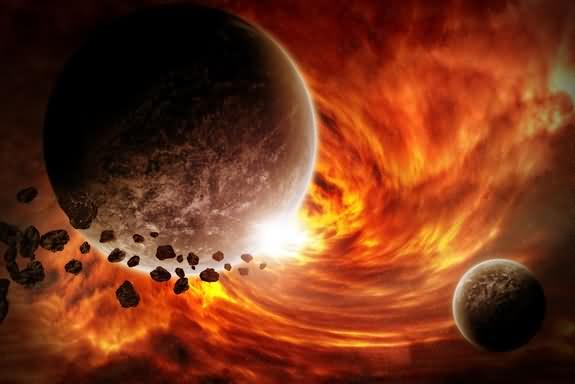ALMA Finds Binary Star System with Strange Planet-Forming Disks
Astronomers using the Atacama Large Millimeter/submillimeter Array have found a striking disk of planet-forming gas wildly aligned around both stars of the young HK Tauri binary star system. These new ALMA observations provide the sharpest images yet of a protoplanetary disk in a binary star. The new results also help explain why most exoplanets—unlike planets in our Solar System—have unusual, highly eccentric, or inclined orbits. The new results will be published in the July 31, 2014, issue of Nature.
Aside from our solitary Sun, most stars are born in pairs—two stars orbiting each other. Binary stars are quite common, but they raise numerous questions, such as how and where do planets form in such complex systems?
“ALMA has given us our best-ever view of a binary star system with protoplanetary disks — and we find that the disks are counter-aligned!” says astronomer Eric Jensen of Swarthmore College, Pennsylvania, USA.
Located 450 light-years from Earth Bull in the direction of the constellation HK Tauri The stars of the binary system are approximately 58 billion kilometers apart—13 times the Sun-Neptune distance—and less than five million years old.
The fainter star HK Tauri B is an edge-on star that blocks starlight protoplanetary disk It is surrounded by the star's glare, so astronomers visible or near-infrared wavelengths, they can image the disk well.
The companion star, HK Tauri A, also has a disk, but this time the starlight is unobstructed. As a result, the disk is invisible in visible light because its faint glow obscures the star's dazzling brightness. However, the disk shines brighter in millimeter-wavelength light, a region easily detectable by ALMA.
TAKINGUsing the , the team not only imaged the disk around HK Taruri A but also made the first-ever rotation measurements. With this sharper image, astronomers were able to calculate that the disks are aligned with each other by at least 60 degrees. Rather than the disks of two stars orbiting each other being in the same plane, at least one of them must be significantly out of alignment.
"This apparent misalignment provided a remarkable glimpse into a young binary star system," said Rachel Akeson of the Exoplanet Science Institute at NASA's California Institute of Technology. "While observations have hinted at the existence of such misaligned systems before, the new ALMA observations of HK Tauri show much more clearly what's happening in one of these systems."
Stars and planets form from vast clouds of gas and dust. As the matter in these clouds contracts under gravity, it begins to rotate until most of the dust and gas is absorbed by the growing central protostar until it falls onto the flattened protoplanetary disk orbiting it.
But in binary systems like JK Tauri, things are much more complicated. When the orbits of the stars and the protoplanetary disks are not roughly in the same plane, the planets that would form would have very high eccentricities and highly inclined orbits. [1].
"Our results show that the conditions necessary to shift planetary orbits are present, and these conditions were present during planet formation, and appear to be due to the formation process of this binary star system," Jensen says. "We can't rule out other theories, but we're confident that the second star is responsible.
ALMA observations of dust and gas within the otherwise invisible protoplanetary disk provided unprecedented views of this young binary star system. "Because we're observing it alongside the existing protoplanetary disks still in their early formation stages, we can better see how the material is oriented," he said.
In the future, researchers want to determine how common such systems are. They note that this is a special case, but further surveys will be necessary to determine whether this type of alignment is common within our own galaxy, the Milky Way.
Jensen concludes: "While understanding this mechanism is a major step, it doesn't explain everything about the strange orbits of exoplanets—there aren't enough binary companions yet to provide the full answer. So, the intriguing puzzle remains to be solved!"
Notes
[1] If two stars and their disks are not in the same plane, the gravitational influence of one star will perturb the disk of the other star, causing it to wobble or wobble, and vice versa. The formation of a planet in one of these disks will again be influenced by the other star, causing the orbit to tilt and distort.
Connections
- Research article
- NRAO press release on HK Tauri results
- NASA/ESA Hubble Space Telescope image of HK Tauri
- More information about ALMA
- ALMA photos
- ALMA videos
- ALMA brochure
- ALMA movie — In Search of Our Cosmic Origins
- ALMA Probing Our Cosmic Origins Videobook – Building the Atacama Large Millimeter/submillimeter Array
- Other press releases about ALMA
This is a translation of the ESO Press Release eso1423.

